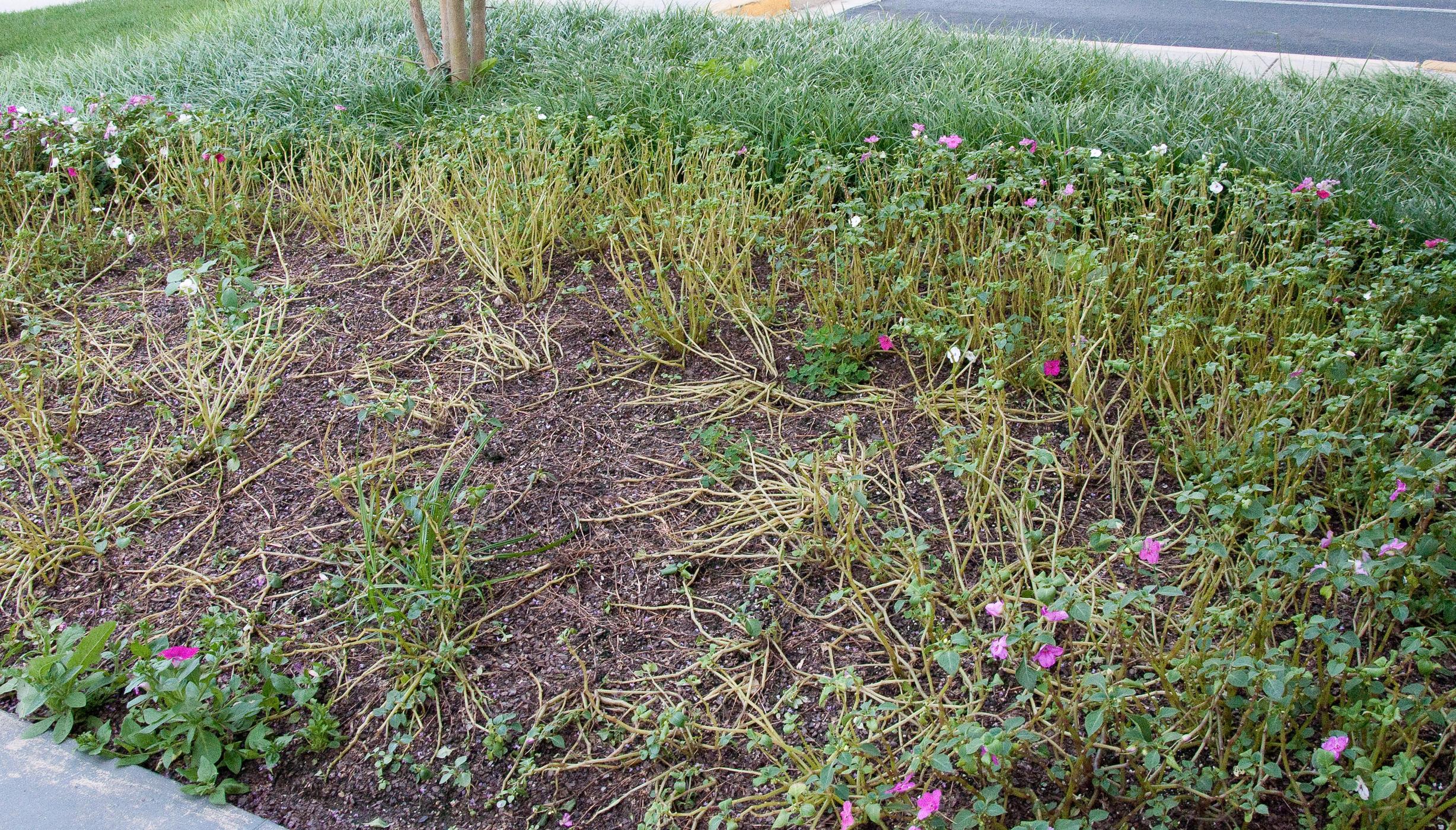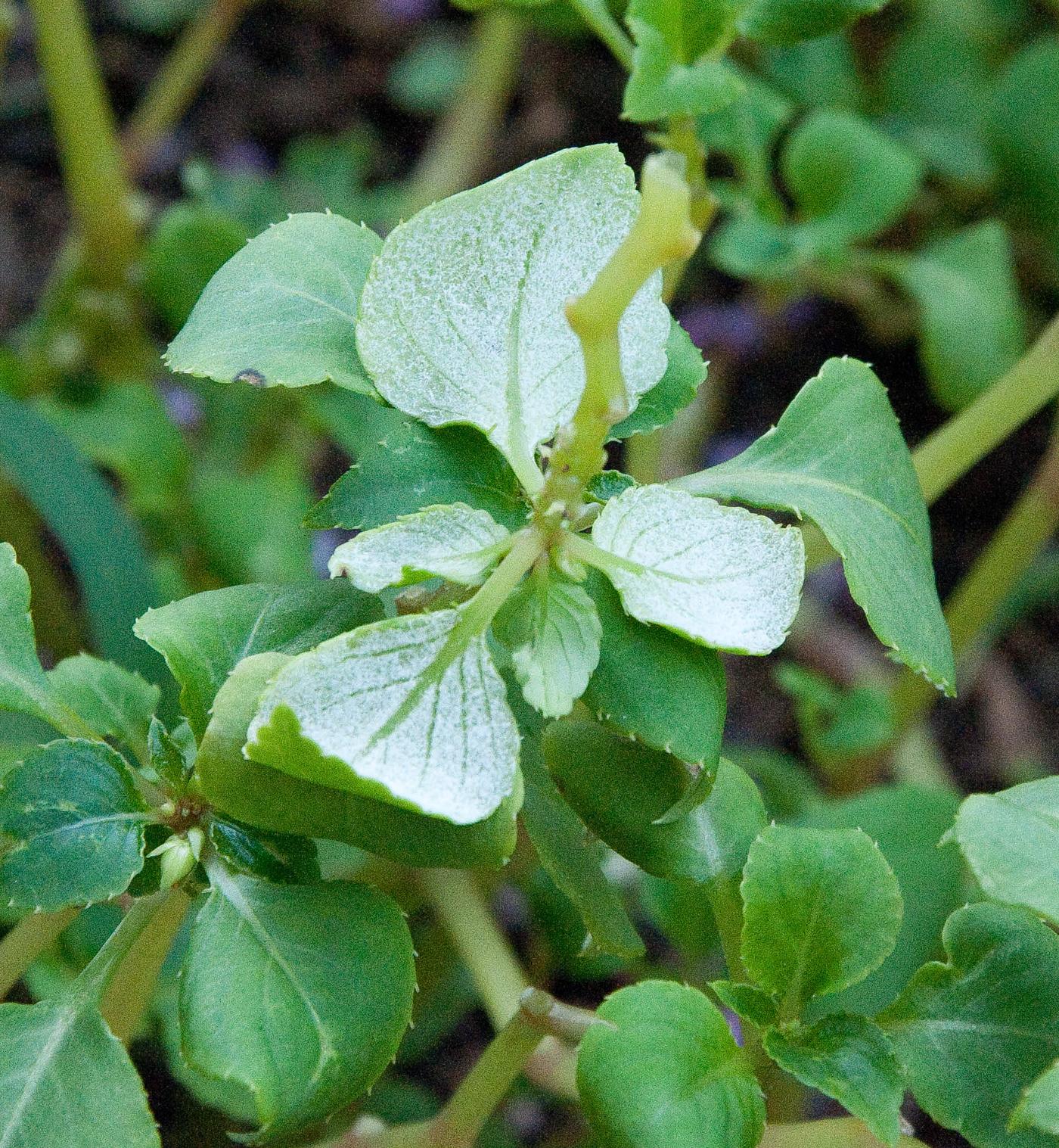Updated: October 22, 2024
Introduction
Severe outbreaks of downy mildew in garden impatiens (Impatiens walleriana) were reported in the fall of 2011 on landscape plantings in Europe as well as in the US (Northeast, Midwest). In February 2012, the disease was reported in Florida landscapes and nurseries. In Maryland, the Plant Diagnostic Lab received its first infected sample in early June 2012. If you grow garden impatiens, it is important to be on the lookout for this disease. All varieties of garden impatiens (seed or cutting propagated) are susceptible to downy mildew. New Guinea impatiens (Impatiens x hawkeri) are reported to be tolerant of the disease. SunPatiens, a hybrid impatiens developed by Sakata Seeds, is reported to be resistant. Imara and Beacon series are also resistant cultivars. The impatiens downy mildew pathogen (Plasmopara obducens) does not infect any hosts other than impatiens.
Symptoms
Symptoms of this downy mildew can be very subtle – slight chlorosis (yellowing) or mottling of leaves, leaf edges curling downward, and plant stunting are early symptoms, followed by leaf drop. Look for the white to grayish white fuzzy growth on the undersides of the yellow or curled leaves as the key sign of downy mildew infection. If you are in doubt, send a sample to the UMD Plant Diagnostic Lab for diagnosis.
Management
Early detection and sanitation are critical parts of a management plan – inspect all new shipments of impatiens for downy mildew symptoms. Discard any symptomatic plants promptly, as well as nearby plants (put plants in plastic bags right at the bench, before carrying them out of the greenhouse, to keep from spreading the spores through the facility). Do not compost diseased plants. Fungicides effective in controlling downy mildew in impatiens include mancozeb (a protectant), and systemics such as mefenoxam (Subdue Maxx), dimethomorph (Stature), fosetyl al (Aliette), fluopicolide (Adorn, must be tank-mixed with another downy mildew product and the combination product Pageant (pyraclostrobin+ boscalid). Make sure to alternate products with different modes of action (Group or FRAC codes). Ball Horticulture has a fact sheet on impatiens downy mildew with detailed information on the disease cycle and management, which can be found at the following link: https://www.ballseed.com/PDF/ImpatiensDownyMildew-GrowerGuidelines_v13.pdf
Impatiens downy mildew is not a disease that is easily controlled with fungicides in the landscape – once plants are infected, sprays are useless. There are several fungicides that can protect plants from downy mildew infection, but they must be applied preventively. Sanitation is the best option for control since this disease has the potential to overwinter in infected plant debris in the soil.
The information given herein is supplied with the understanding that no discrimination is intended and no endorsement by University of Maryland Extension is implied. Read labels carefully before applying any pesticides.


